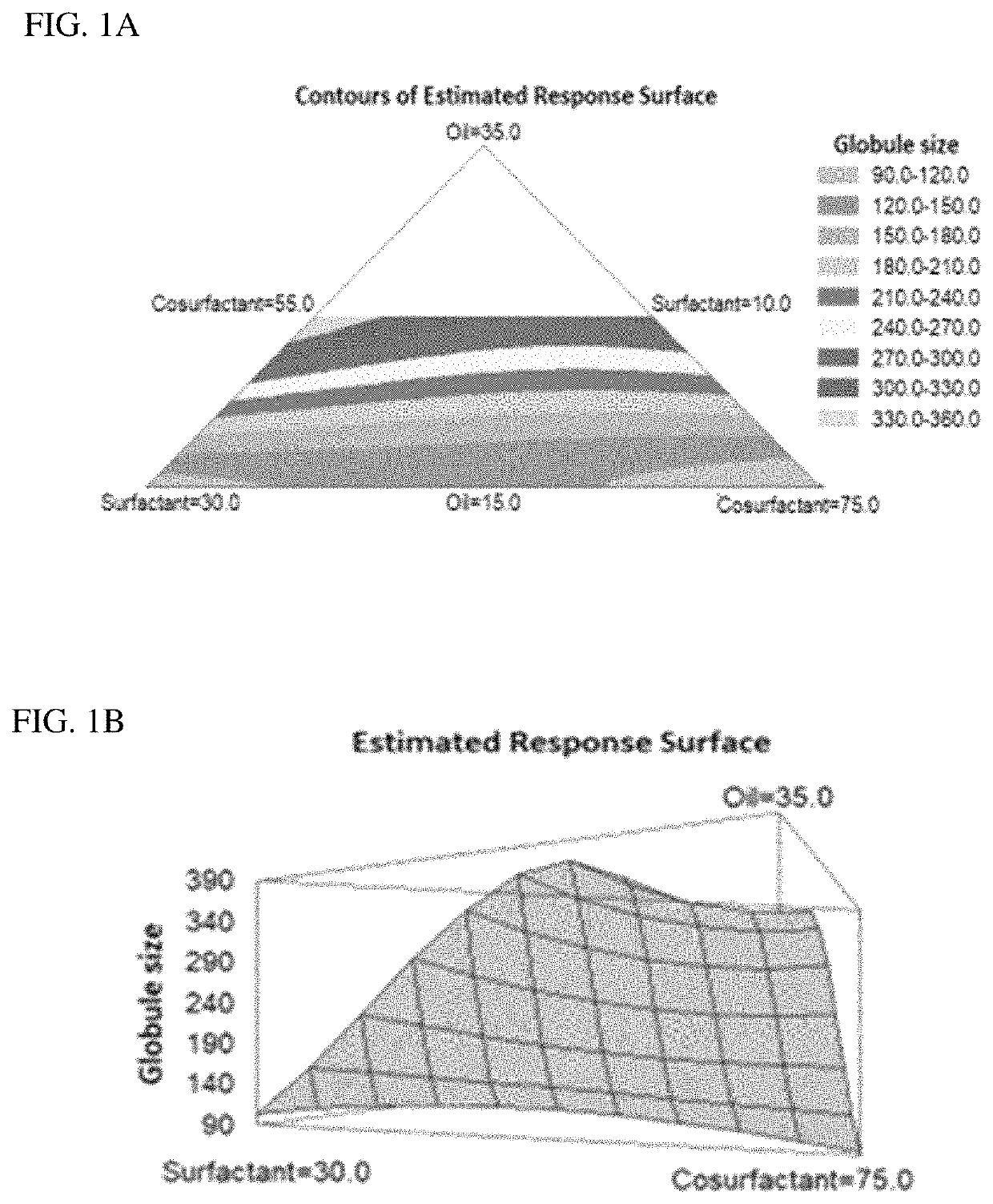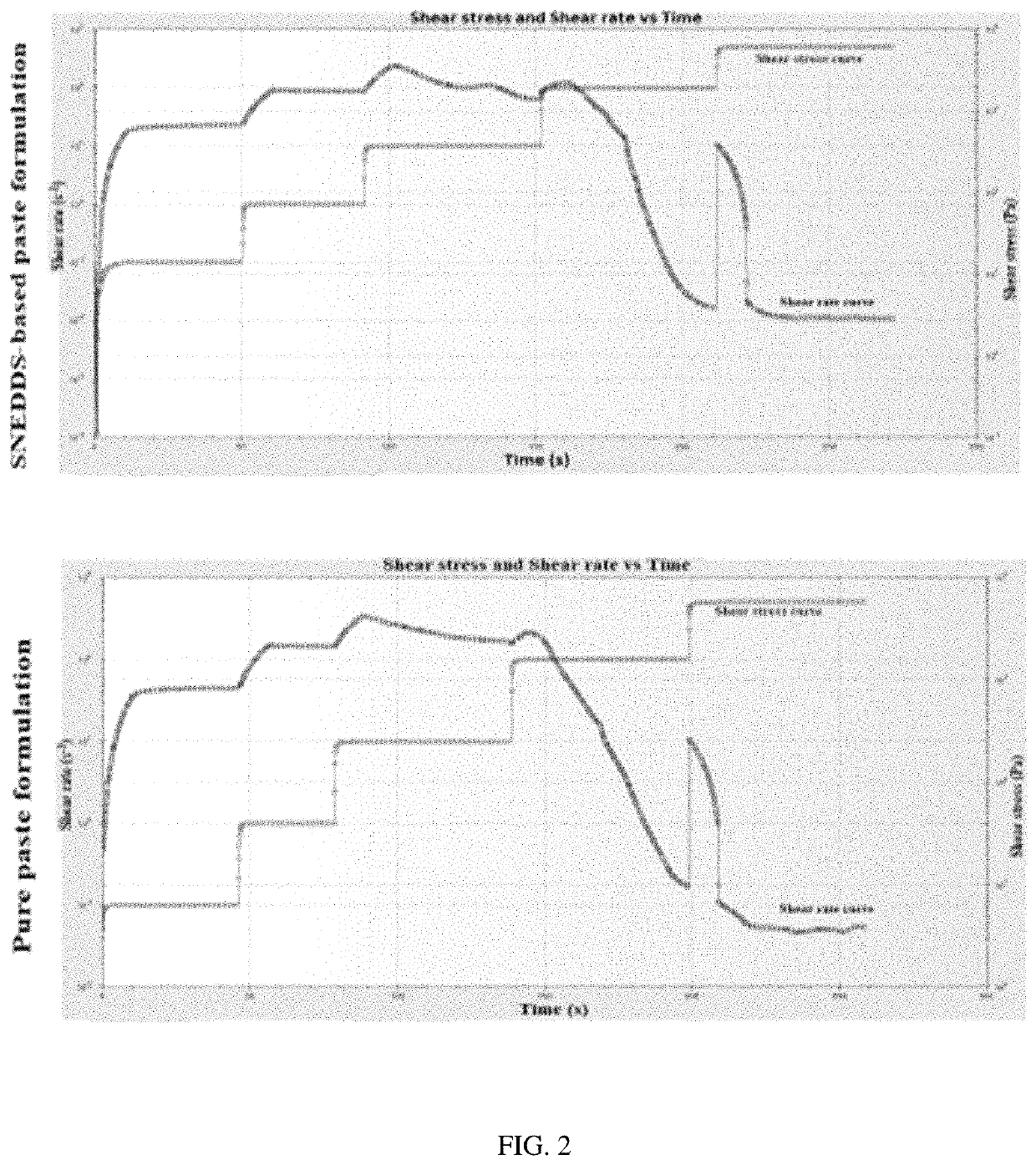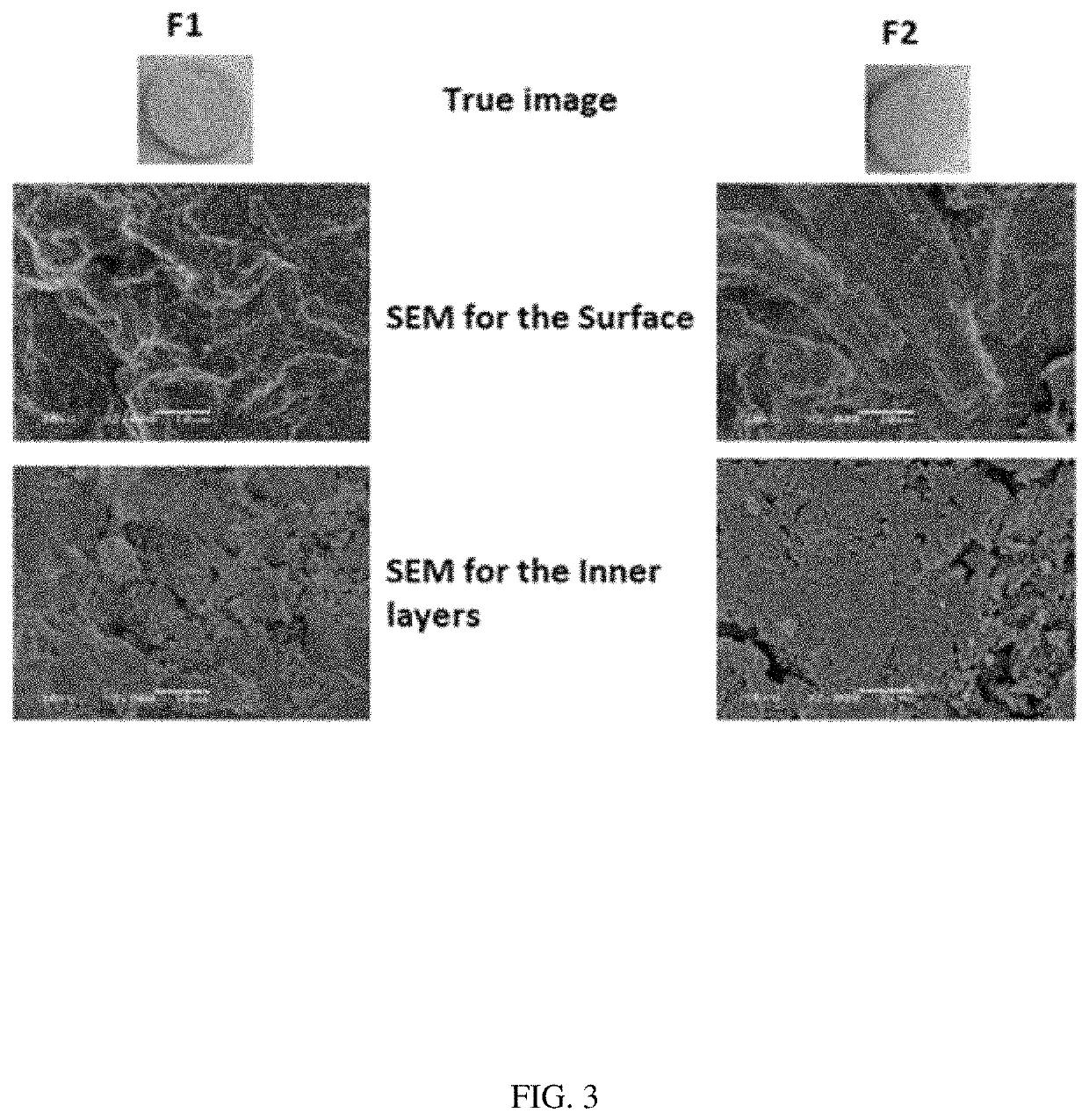Self-nanoemulsifying 3D-printed tablet composition and method of use thereof
a 3d printer and composition technology, applied in the direction of nanotech, pill delivery, organic active ingredients, etc., can solve the problems of slow manufacturing flexibility and personalization, many active pharmaceutical ingredients (apis) do not reach the commercialization stage, and the potential patient compliance issue, etc., to achieve enhanced bioavailability and improve the bioavailability of multi-compartmentalized tablets
- Summary
- Abstract
- Description
- Claims
- Application Information
AI Technical Summary
Benefits of technology
Problems solved by technology
Method used
Image
Examples
example 1
Methods and Materials for Manufacturing SNEDDS 3D Printed Tablet
[0040]Glimepiride and Rosuvastatin were kindly gifted by the Saudi Pharmaceutical Industries & Medical Appliances Corporation (SPIMACO) (Alqasim, Saudi Arabia) and the Saudi Arabian Japanese Pharmaceuticals Co. Ltd (SAJA) (Jeddah, Saudi Arabia), respectively. Microcrystalline cellulose (Avicel) PH-101 from Winlab laboratory chemicals (Leicestershire, UK). Hydroxypropyl methyl cellulose (HPMC) 4000 cp were obtained from Spectrum Chemical Manufacturing Corporation (Gardena, Calif.). Lactose anhydrous, Polyethylene glycol (PEG) 400, Tween 80, Polyvinyl pyrrolidone (PVP) with a molecular weight of 360,000 Da (K90), Methocel® A15 LV, 27.5-31.5% methoxyl basis were all purchased from Sigma-Aldrich Inc. (St. Loius, Mo.). Croscarmellose sodium (Ac-di-sol) from Biosynth International, Inc (San Diego, Calif.).
Plant Material and Oil Extraction
[0041]Curcuma longa Linn (Turmeric) rhizomes (Zingiberaceae) were obtained from a local m...
example 2
Preparation of SNEDDS Paste Formulation
[0046]Two types of viscous gel matrix formulations were prepared using HPMC (4% w / v) as a gelling agent. Pure gel and SNEDDS-based gel formulations were prepared according to the formulation composition depicted in Table 2. Pure gel formulations were prepared by dispersing a known weight of either RSV or GLMP in distilled water over a magnetic stirrer. HPMC was added gradually to the mixture while stirring. The obtained medicated polymeric mixture formulations were left for overnight at 4° C. in a refrigerator to allow complete swelling of the HPMC particles and formation of viscous gels.
[0047]SNEDDS-based gels were prepared by adding known weight of either RSV or GLMP to 2 g of the prepared optimized SNEDDS formulation. The medicated SNEDDS formulation was added to 18 mL of distilled water over a magnetic stirrer. HPMC was added gradually to mixture with continuous stirring. The medicated polymeric mixture was left over night in the refrigerat...
example 3
Characterization of the 3D Printed Tablets
[0052]The prepared dried 3D-printed tablets (F1-F6) were characterized for weight, thickness, diameter, friability, drug(s) content and in vitro drug release. All tests were conducted according to the requirements stated in the United States Pharmacopeia for quality control tests of tablets (USP 41-NF 36, 2018). The average weight of ten tablets, from each formulation, was estimated using Mettler Toledo AJ100, electric balance (Greifensee, Switzerland). The thickness and diameter (n=10) were determined using Mitutoyo dial thickness gauge (Kawasaki, Japan). Friability (n=10) of the prepared tablets was evaluated using Erweka Friabilator type PTF1, Pharma-test (Hainburg, Germany). It was calculated as a fraction of the weight of the original tablets after allowing the studied tablets to rotate in the test apparatus for 4 min at 25 rpm.
Spectrophotometric Analysis of GLMP and RSV
[0053]For the quantification of GLMP or RSV and a combination of bo...
PUM
| Property | Measurement | Unit |
|---|---|---|
| dry weight | aaaaa | aaaaa |
| dry weight | aaaaa | aaaaa |
| dry weight | aaaaa | aaaaa |
Abstract
Description
Claims
Application Information
 Login to View More
Login to View More - R&D
- Intellectual Property
- Life Sciences
- Materials
- Tech Scout
- Unparalleled Data Quality
- Higher Quality Content
- 60% Fewer Hallucinations
Browse by: Latest US Patents, China's latest patents, Technical Efficacy Thesaurus, Application Domain, Technology Topic, Popular Technical Reports.
© 2025 PatSnap. All rights reserved.Legal|Privacy policy|Modern Slavery Act Transparency Statement|Sitemap|About US| Contact US: help@patsnap.com



